Flume Gorge in Lincoln, New Hampshire
The Flume Gorge in Lincoln, NH, is a must-see for anyone visiting Franconia Notch. Planning a visit? Here’s what you’ll find at this favorite White Mountains outdoor attraction.
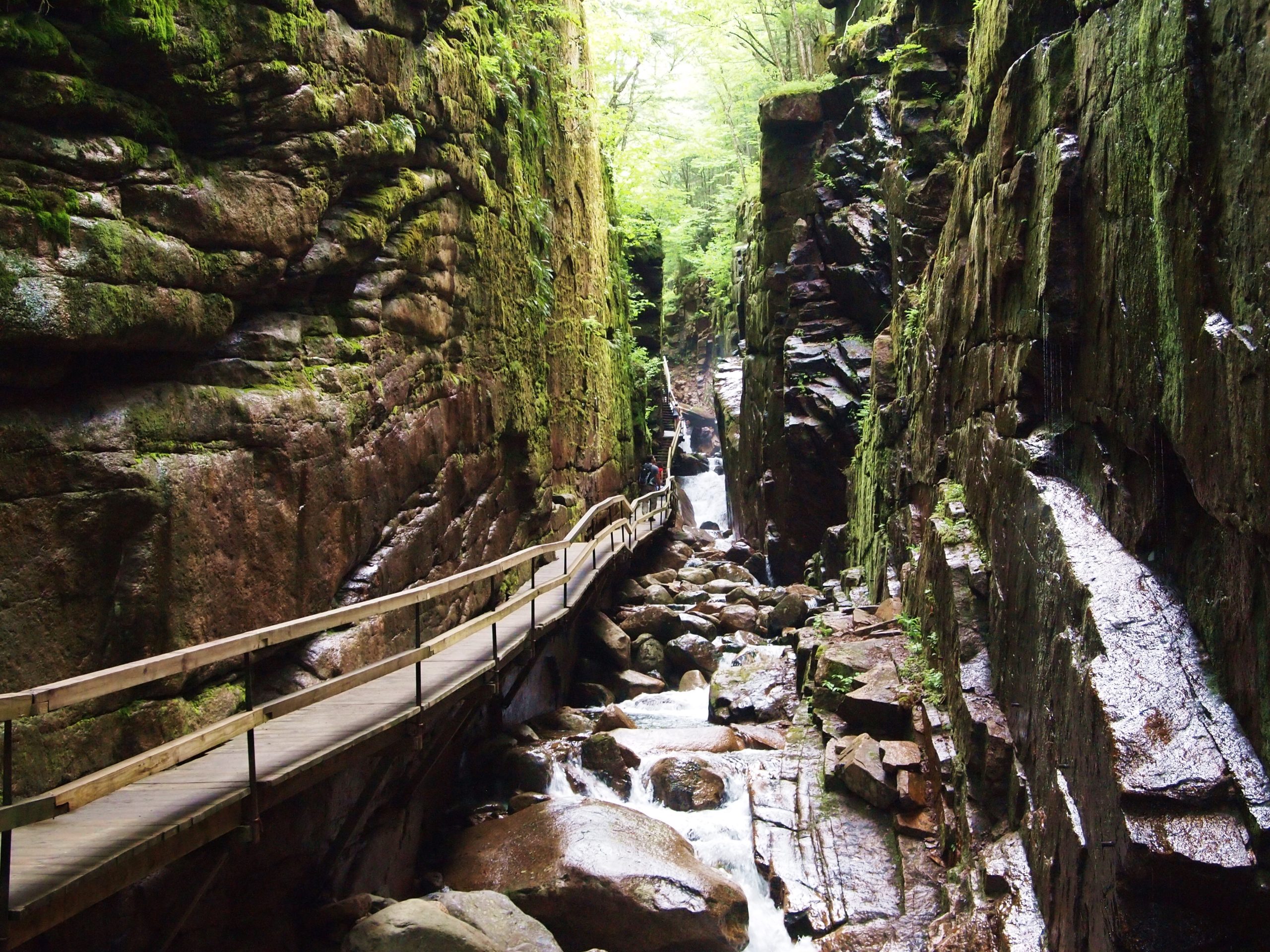
2018 Best of New Hampshire | The Flume Gorge
Photo Credit : Bethany BourgaultNinety-three-year-old “Aunt” Jess Guernsey was stunned (and in extraordinary shape for her age, we’d say). She had taken the warm June day to explore the land surrounding her family’s new homestead, and was following the sound of running water to what she hoped would be a new fishing hole. What she found instead was amazing and unexpected. Looking up, she saw a chasm unlike any other. 800 feet long and up to 90 feet tall in some places, Aunt Jess had never seen anything like it. That was in 1808. The rest, they say, is history.
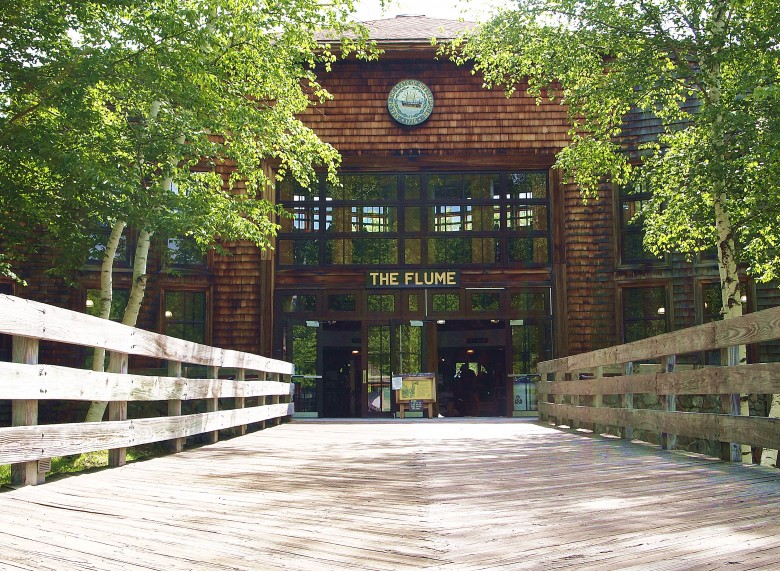
Photo Credit : Bethany Bourgault
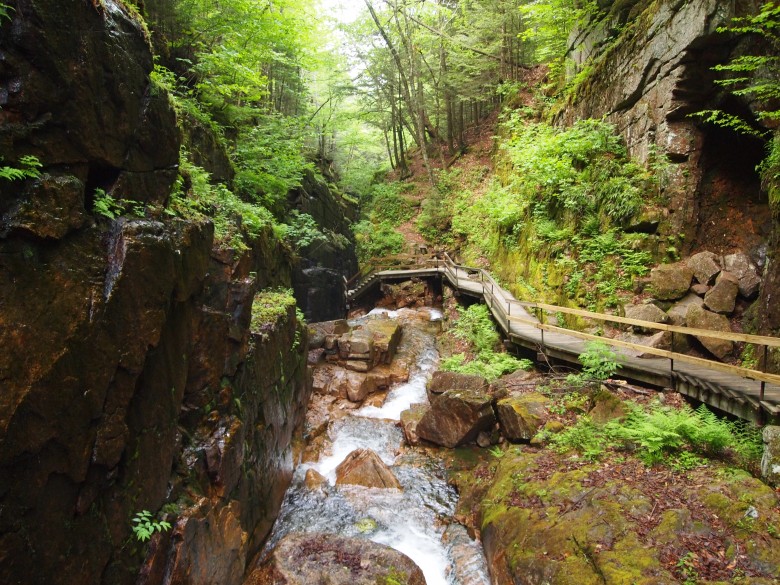
Photo Credit : Bethany Bourgault
While fishing at the Flume is no longer permitted, marveling at it is certainly encouraged, and countless amateur explorers rightly do so each year. An easy, interactive, two-mile trail loop makes visiting the gorge a family-friendly outdoor adventure, while a shorter, even more accessible path leading straight to the gorge makes this breathtaking natural wonder available to almost anyone. Several waterfalls, natural cave-like rocks, and a classic 1886 covered bridge add to the magic of the Flume, though nothing quite compares to the walk through the gorge itself.
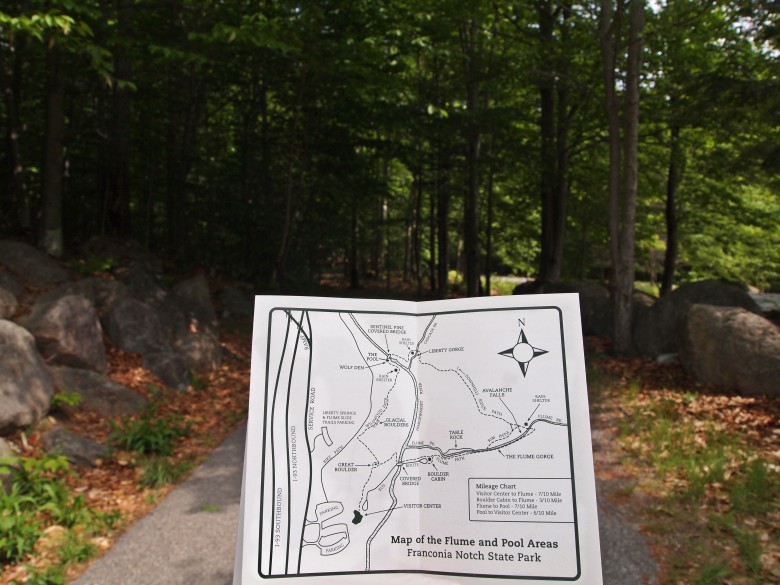
Photo Credit : Bethany Bourgault
The Flume’s history predates its “discovery” by Aunt Jess, of course. The early stages of its formation date to Jurassic times, around 200 million years ago, when the granite that makes up the walls of the Flume, then liquid and molten, was forced upwards to the earth’s surface. Molten basalt was forced upwards too, settling in the cracks of the granite as it cooled. Over many years, as the stone eroded, the finer-grained basalt washed away much faster than the granite, creating the gorge. The Ice Age, though responsible for other popular natural features of the area, like Table Rock and The Pool, had little effect on the gorge, beyond reintroducing water that furthered the basalt erosion. Water erosion and frost-heaving continue to deepen the gorge to this day.
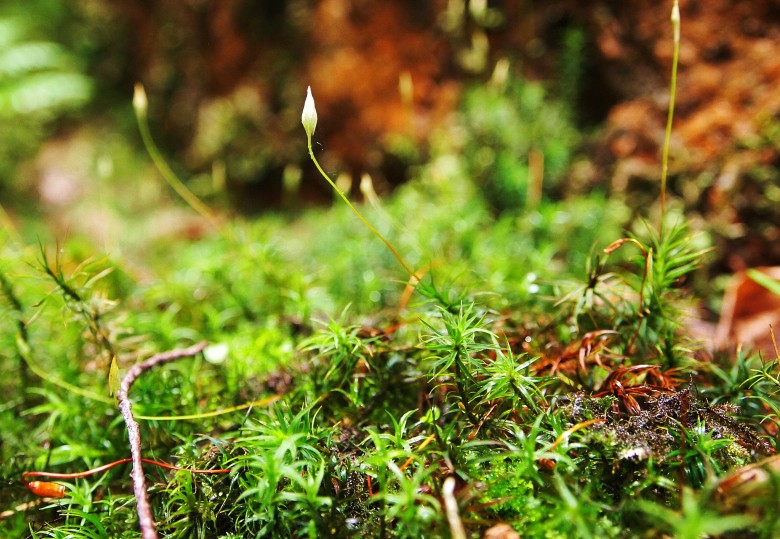
Photo Credit : Bethany Bourgault

Photo Credit : Bethany Bourgault
The granite that makes up the 70- to 90-foot walls of the gorge is a specific, local type—Conway granite. Conway granite is a sometimes pinkish, mineral-heavy, biotite granite rich in thorium, a radioactive metal. (Don’t worry, it’s not radioactive enough to cause any harm!) Edward Hitchcock, professor of geology and theology and third president of Amherst College, named the granite after the nearby town of Conway in 1877. He had spent several years as a minister in Conway before beginning his geological career, so the area held a special place in his heart. The famous Old Man in the Mountain structure, which collapsed in 2003, was also made of Conway granite.
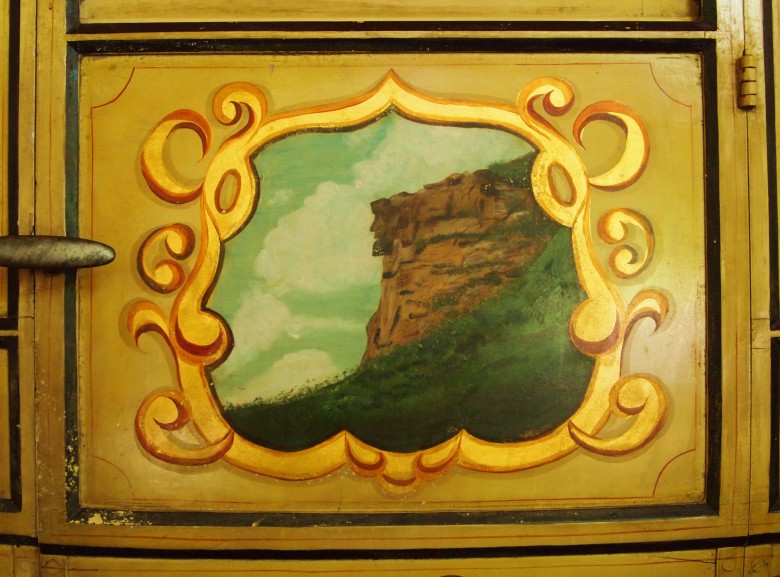
Photo Credit : Bethany Bourgault
Before venturing into the Flume itself, guests must first stop at the visitor center to purchase tickets. Plan to spend a little time here. A cafe (complete with ice cream), gift shop, information center, 20-minute film, museum-like displays, and historic Concord Coach are among the center’s attractions.
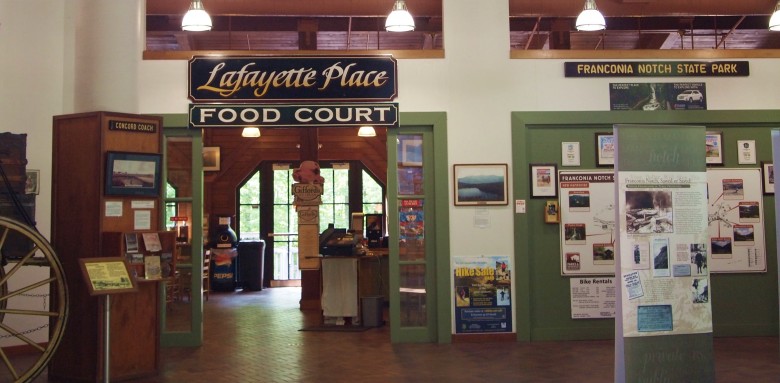
Photo Credit : Bethany Bourgault
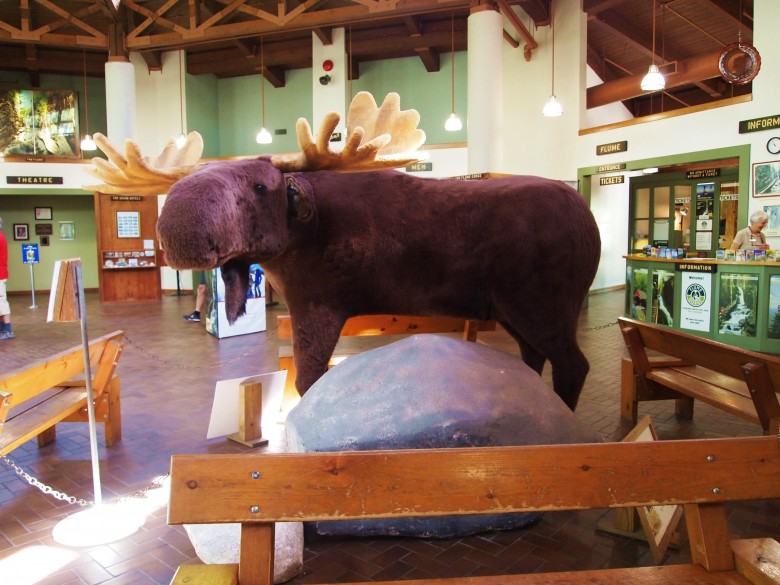
Photo Credit : Bethany Bourgault
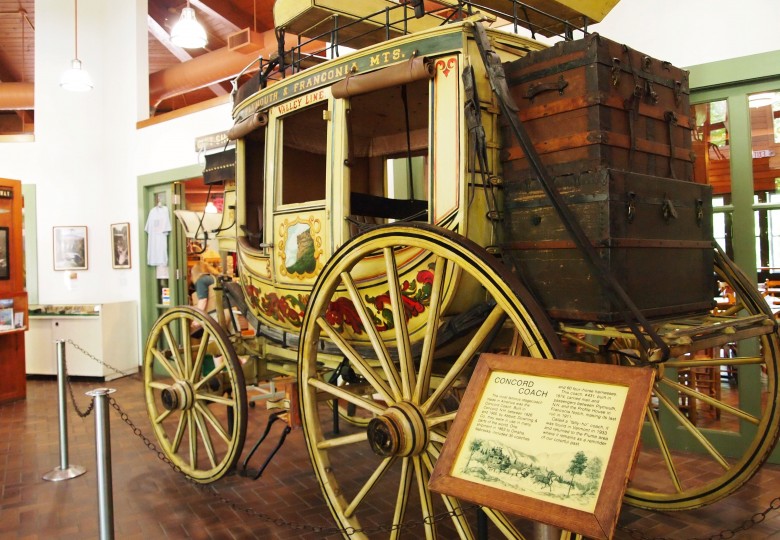
Photo Credit : Bethany Bourgault
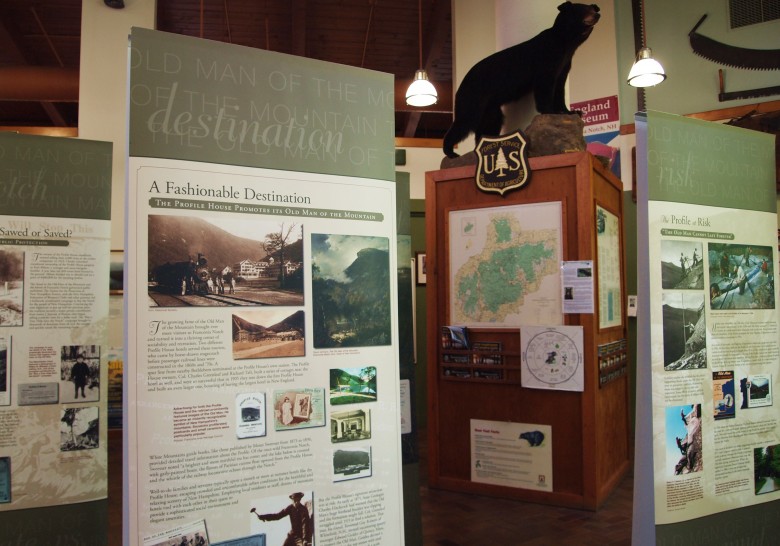
Photo Credit : Bethany Bourgault
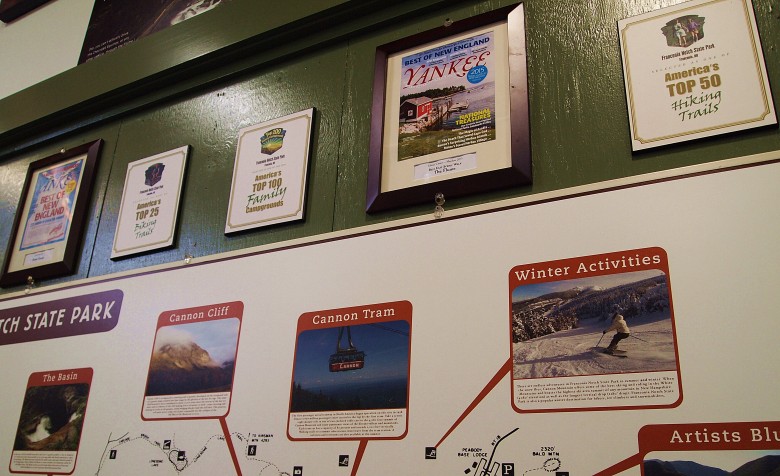
Photo Credit : Bethany Bourgault
Upon exiting the visitor center, guests are greeted with a breathtaking view of Mt. Liberty and Mt. Flume. At 4,459’ and 4,327’, respectively, these giants are incredibly popular with hikers. Many choose to hike Mt. Liberty first, then cross the peak onto Mt. Flume, since the latter’s steep cliffs can be daunting.
The passage through the Flume Gorge, however, is much easier, with helpful signs alerting hikers to fun, natural features.
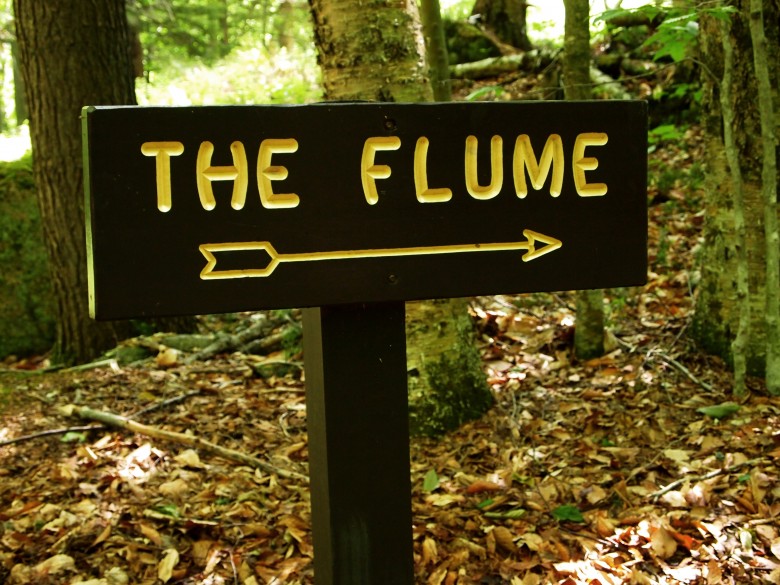
Photo Credit : Bethany Bourgault

Photo Credit : Bethany Bourgault

Photo Credit : Bethany Bourgault
The path leads over the Flume Covered Bridge—a favorite of photographers, historians, and visitors alike. Built in 1866, it’s one of the oldest covered bridges in the state, and stretches across the Pemigewasset (which means “swift or rapid current” in the Abenaki language) River.
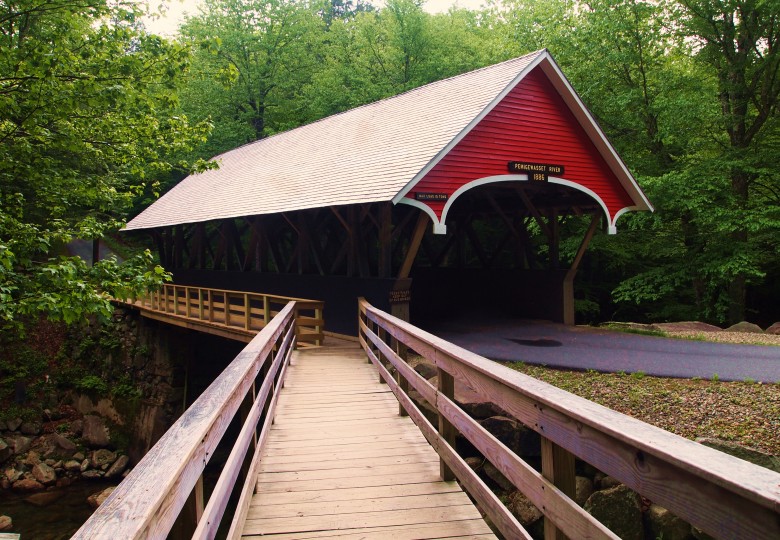
Photo Credit : Bethany Bourgault
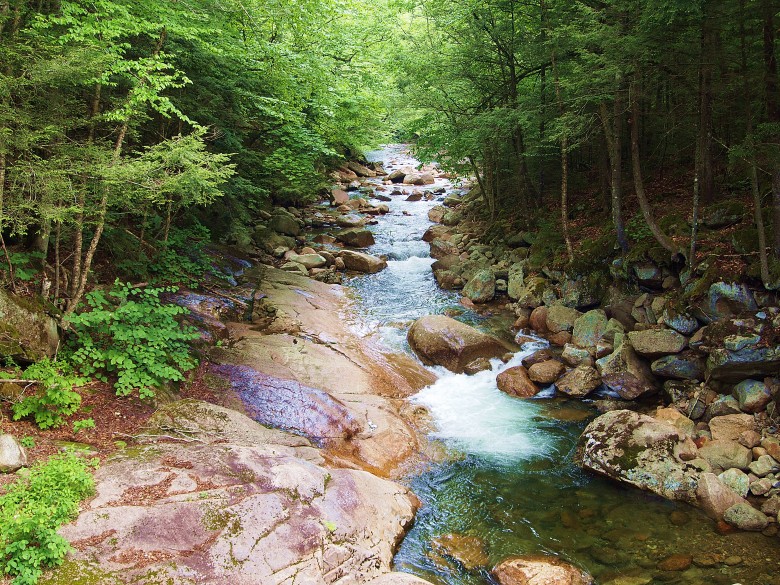
Photo Credit : Bethany Bourgault
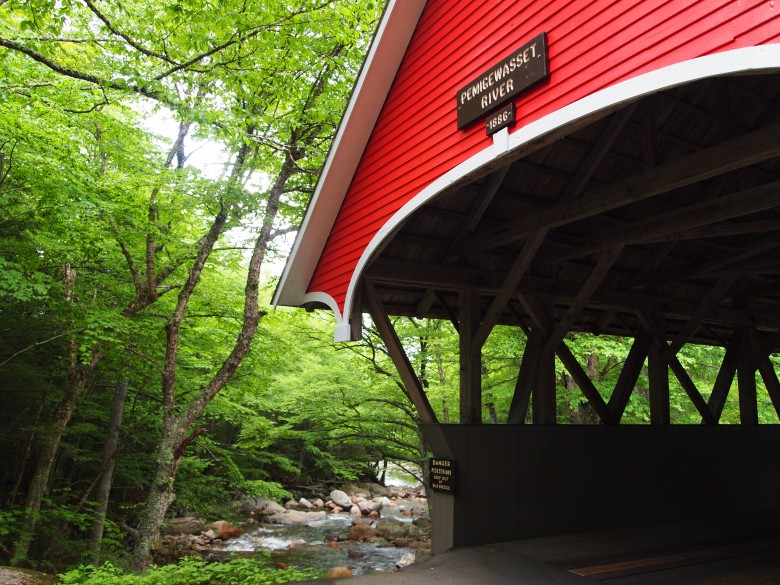
Photo Credit : Bethany Bourgault
After passing by Table Rock—a formidable granite structure created during the last ice age—visitors happen upon the main attraction. The granite walls tower on either side of the path, and cool mist tickles the ankles. The dirt path gives way to boards, bolted into the rock to allow passage over the rushing water below. This is the Flume.

Photo Credit : Bethany Bourgault
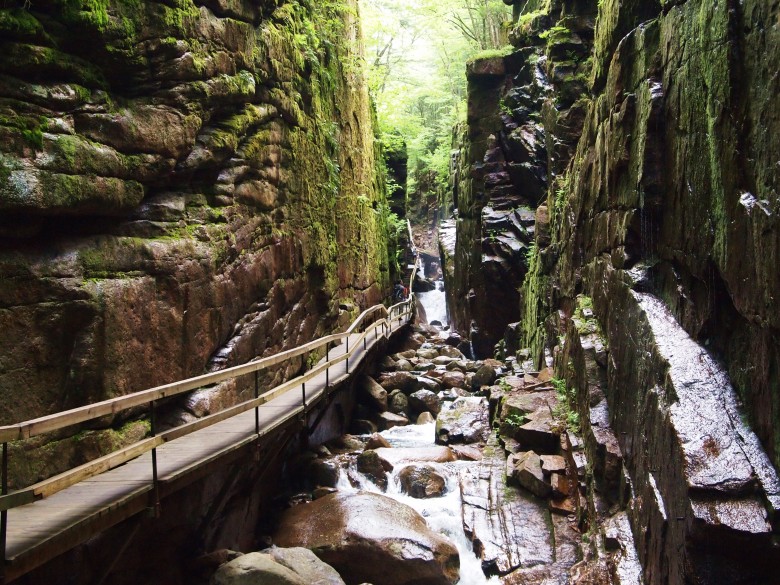
Photo Credit : Bethany Bourgault
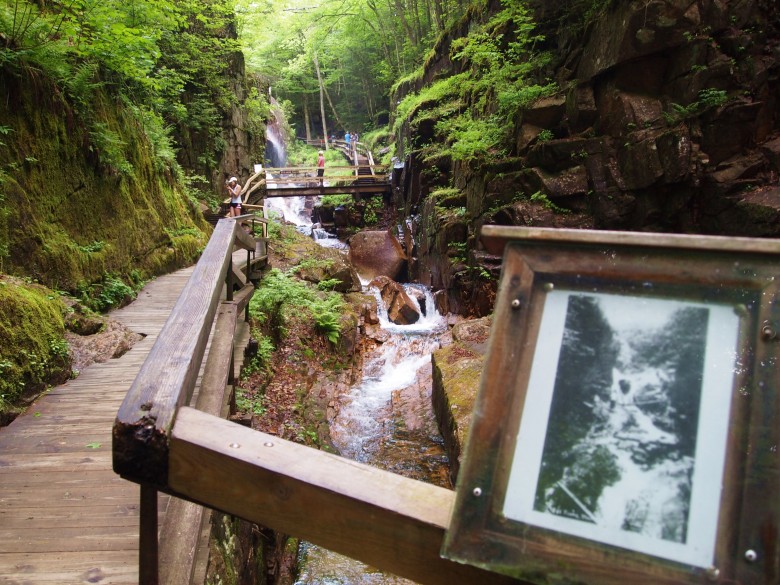
Photo Credit : Bethany Bourgault
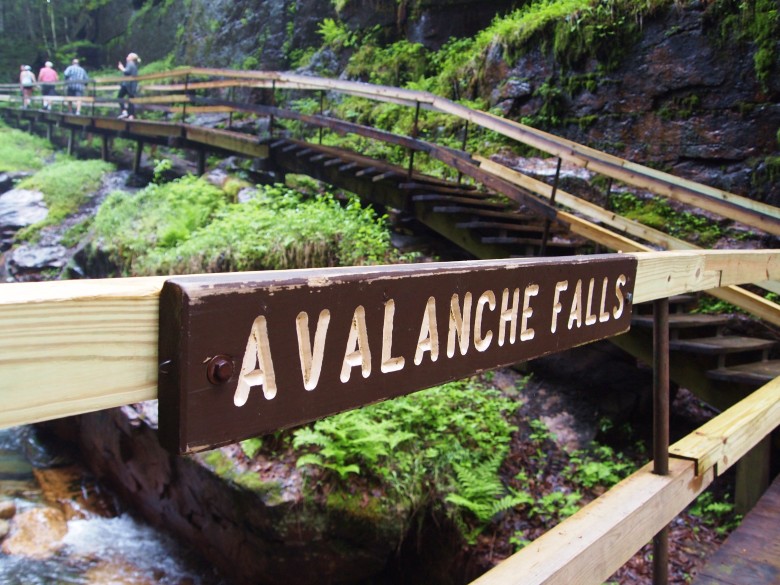
Photo Credit : Bethany Bourgault
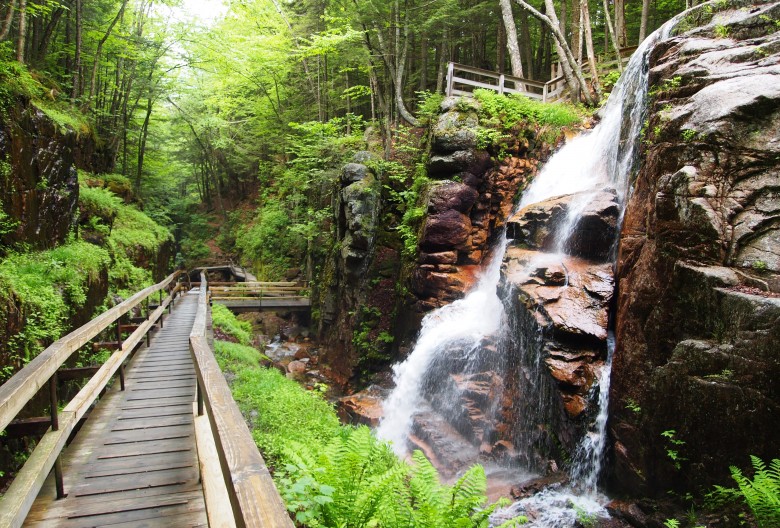
Photo Credit : Bethany Bourgault
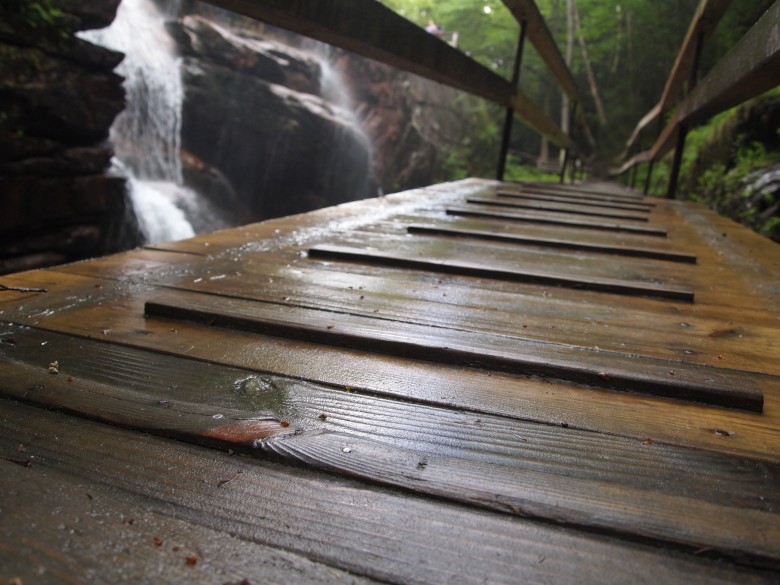
Photo Credit : Bethany Bourgault
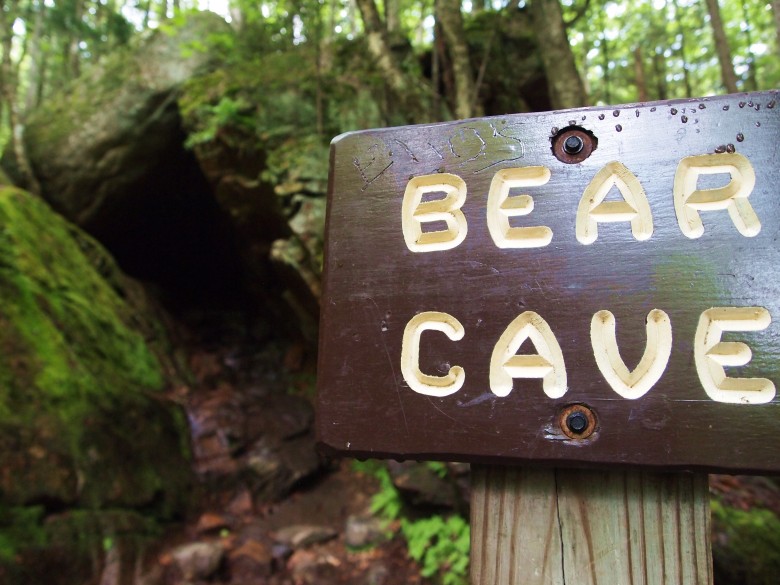
Photo Credit : Bethany Bourgault
After exiting the Flume, guests pass the smaller stream and waterfall of Liberty Gorge. Both Liberty Gorge and the Flume flow into the Pemigewasset River.
Another beloved feature along the Flume path is the Pool and Sentinel Pine Bridge. The 150-foot round Pool is 40 feet deep, and is surrounded by cliffs that measure a dizzying 130 feet high. Stretching across the western side of the pool is the Sentinel Pine Bridge—a quaint covered bridge built atop a 175-foot tall uprooted pine tree. This massive tree was believed to be one of the largest in New Hampshire in September of 1938, when it was strewn across the cliffs during a hurricane.
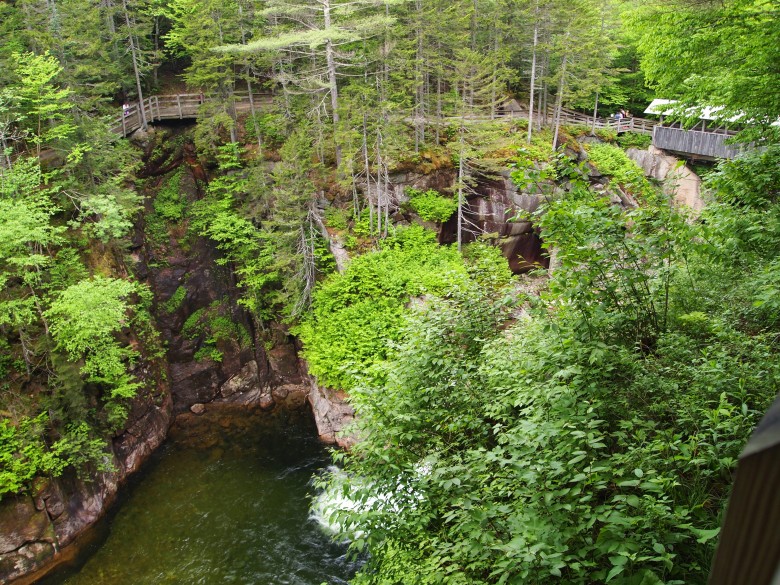
Photo Credit : Bethany Bourgault
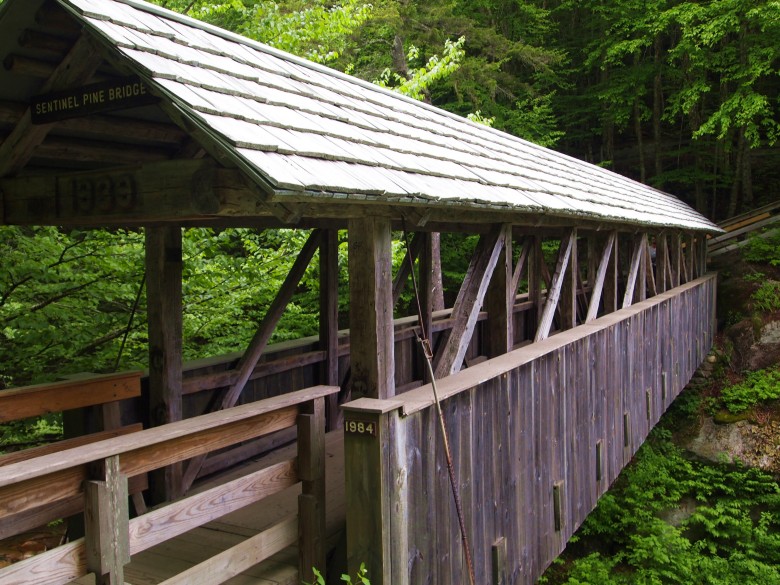
Photo Credit : Bethany Bourgault
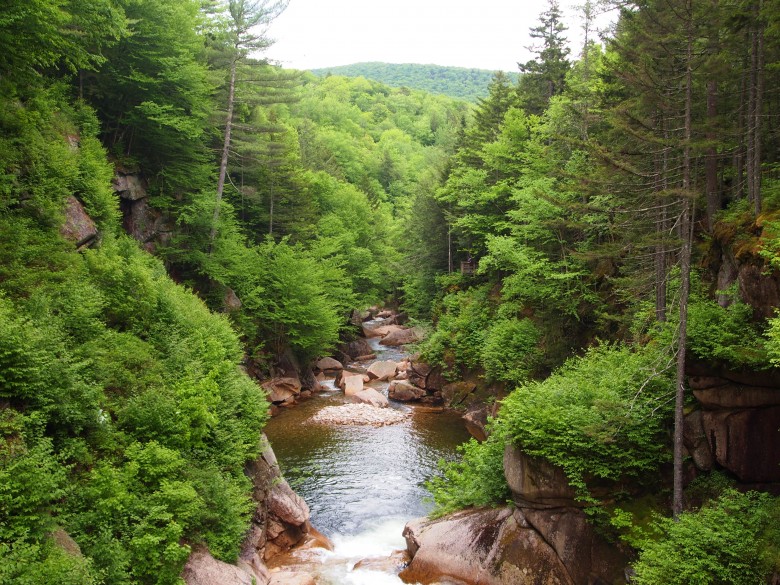
Photo Credit : Bethany Bourgault
Just beyond the bridge is a rock formation that has delighted the little ones since its addition to the trail. The Wolf’s Den is a narrow squeeze through boulders, requiring some hands-and-knees crawling. Those who opt out of this experience can meet their more adventurous companions just a few paces up the path, at the ladder where their smiling faces will emerge from the den.

Photo Credit : Bethany Bourgault
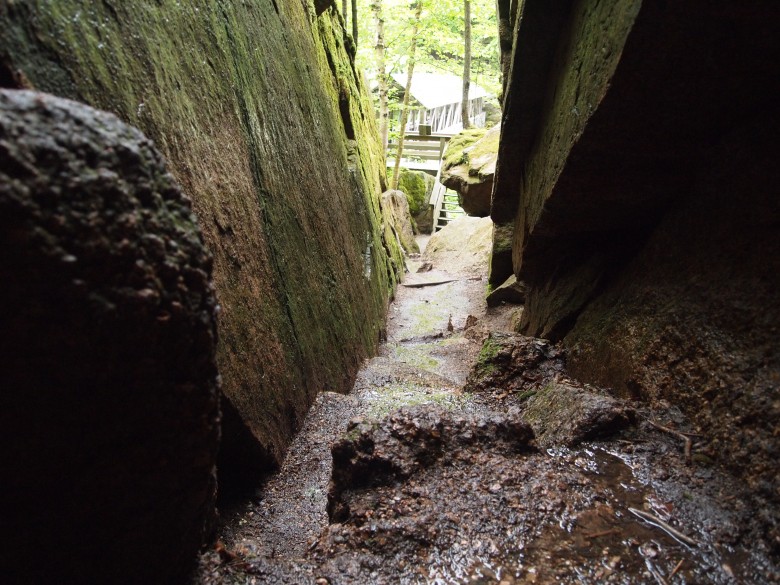
Photo Credit : Bethany Bourgault
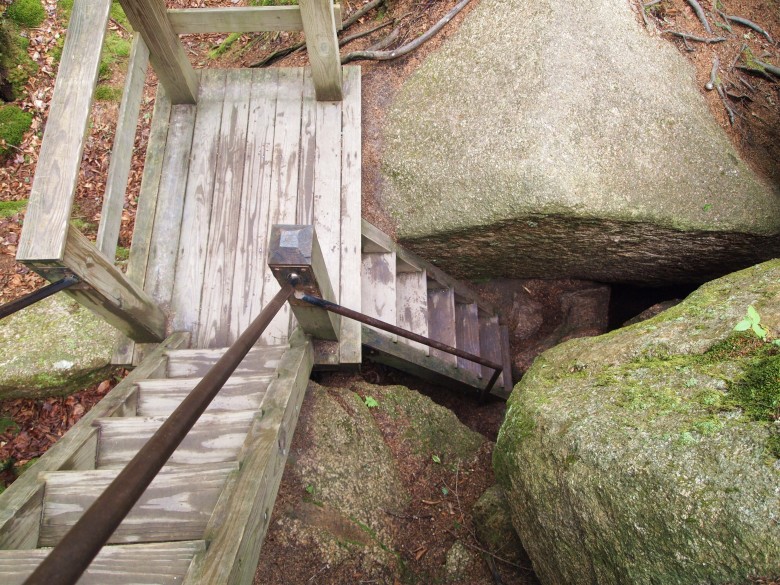
Photo Credit : Bethany Bourgault
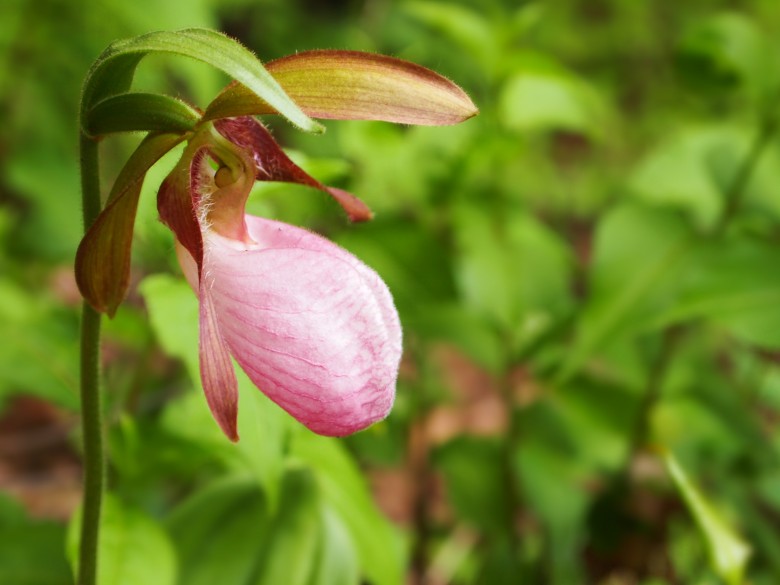
Photo Credit : Bethany Bourgault
Soon enough, the path snakes through the Glacial Boulder garden and back to the visitor center. Don’t forget to stop by the cafeteria to fuel up for your next hike—Franconia Notch is surrounded by plenty of options. Plan accordingly so you can try them all!
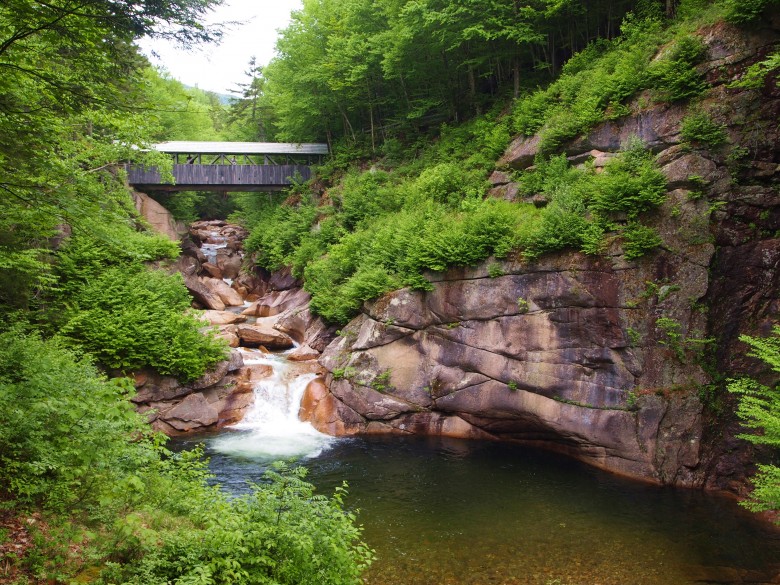
Photo Credit : Bethany Bourgault
Have you ever visited the Flume Gorge?
Flume Gorge. 852 Daniel Webster Highway, Lincoln, NH. 603-745-8391; nhstateparks.org
This post was first published in 2016 and has been updated.
SEE MORE:
The Old Man of the Mountain Memorial | Remembering a Legend
Best of the White Mountains | Editors’ Choice Awards
The Cannon Mountain Aerial Tramway
Bethany Bourgault
Bethany Bourgault interned with Yankee Magazine and New England.com during the summers of 2015 and 2016. She recently graduated from Syracuse University, majoring in magazine journalism with minors in writing and religion. She loves reading, exploring the outdoors, ballroom dancing, and trying new recipes. Keep up with her adventures at bethanybourgault.com.
More by Bethany Bourgault

